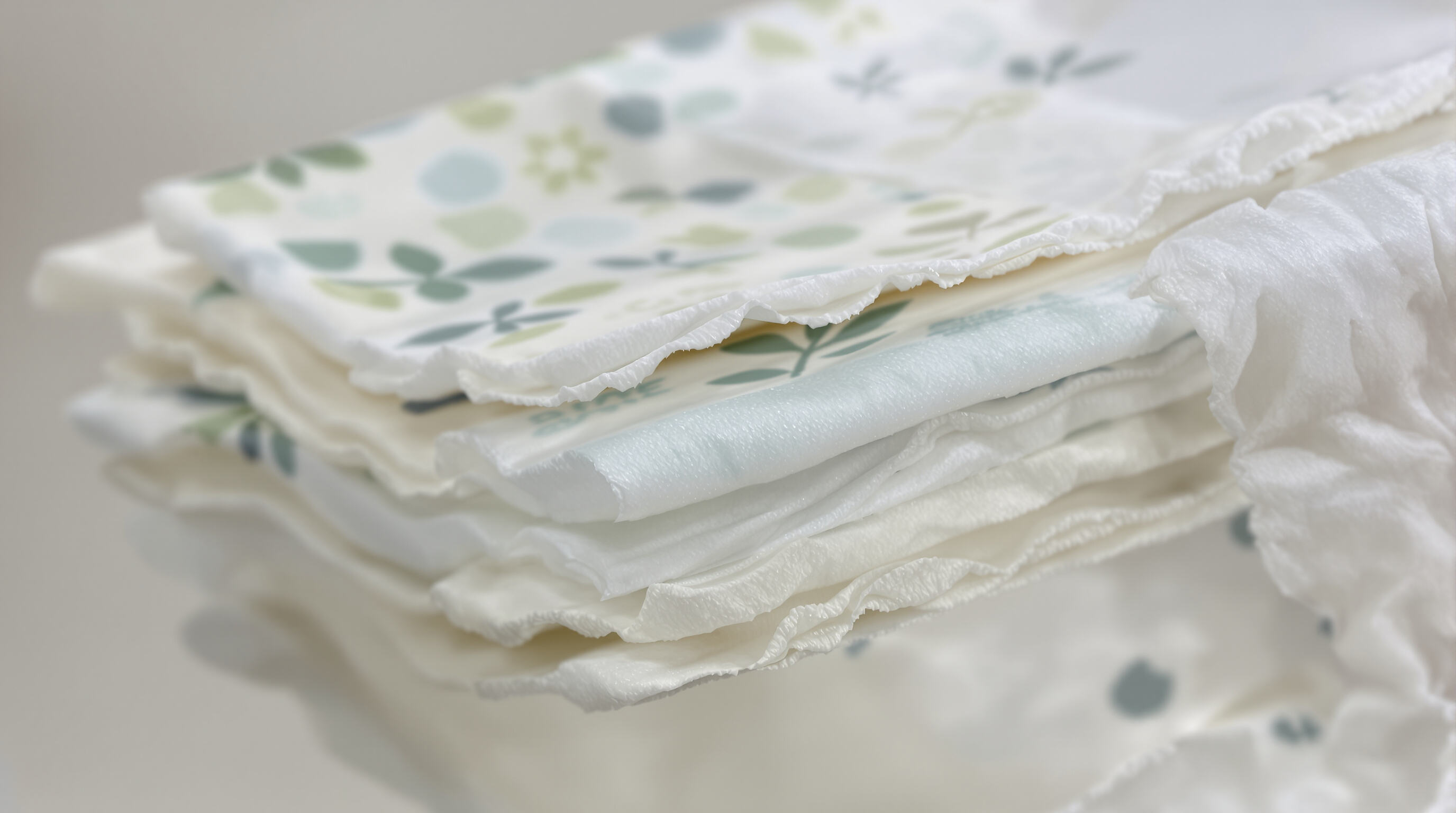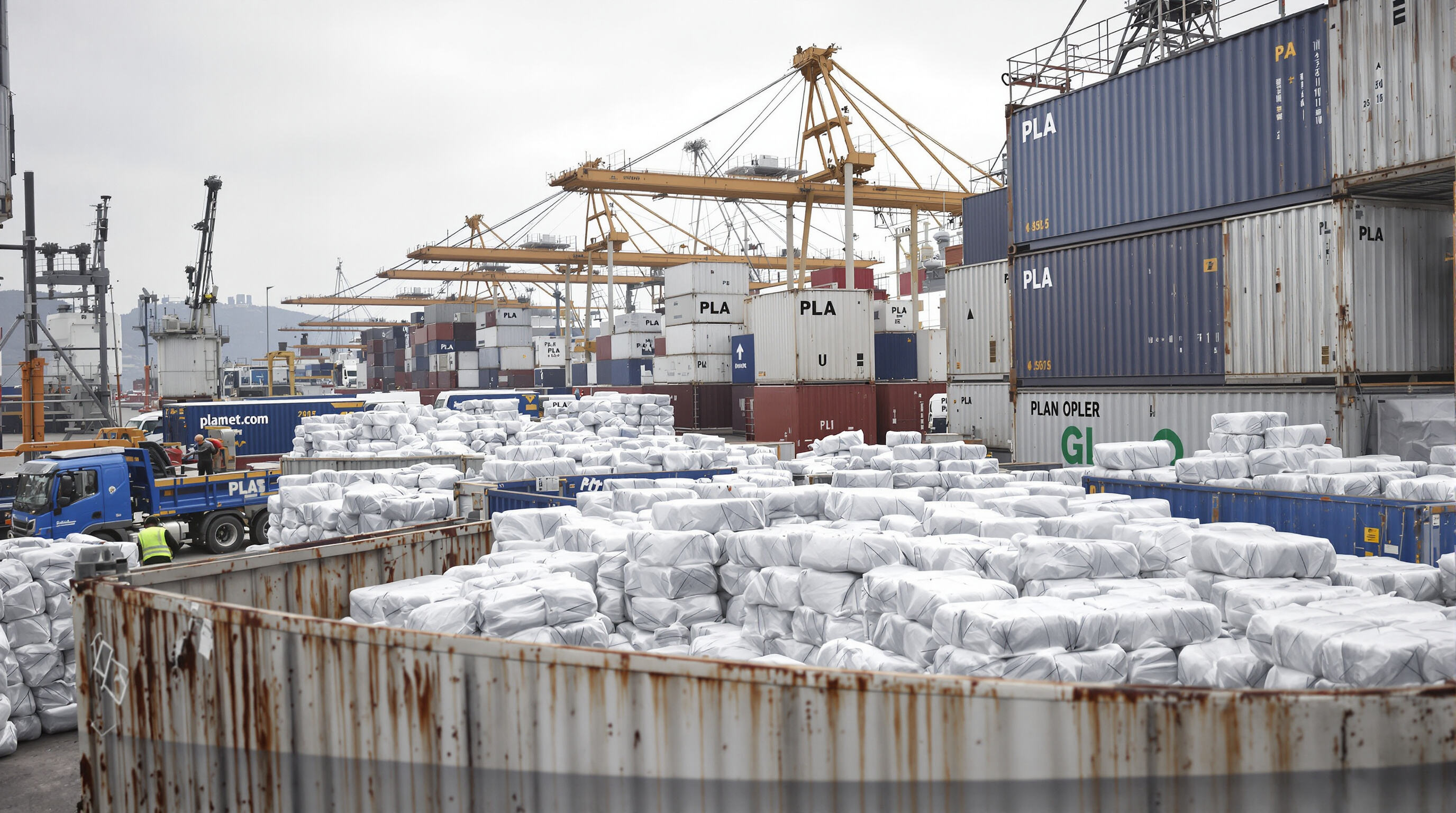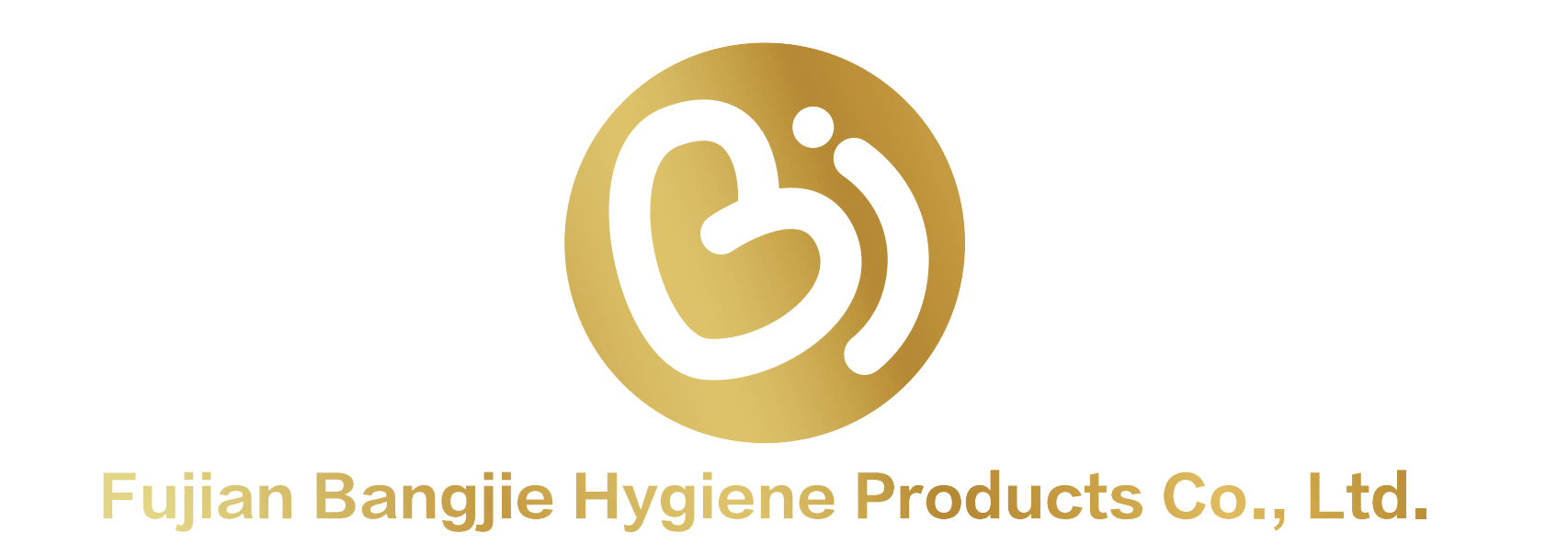Biotəbii parçalanan arxa səthli bir istifadəlik körpə pətiklərini necə təmin etmək olar?
Avropada Biotəbii Parçalanan Bir İstifadəlik Körpə Pətiklərinə Tələbatın Anlaşılması
Ekoloji cəhətdən təmiz və plastiksiz körpə məhsullarına olan üstünlük nəzərə çarpır
Avropada üçün iki üçdən çox valideyn bu gün ətraf mühitə təsirlərini azaltmağa çalışarkən bioloji parçalanan pətiklər seçirlər. Bu dəyişiklik insanların plastikin zibil bazalarında qalmaqla bağlı artan təsəvvürləri və mikroplastiklərin okeanları çirkləndirən problemi ilə əlaqədardır. Fransanın Ekoloji Keçid Nazirliyinin məlumatına görə, ailələrin bu dəyişiklik etməsi illik təxminən 20 faiz artıb, bunun səbəbi isə dövlətin dairəvi iqtisadiyyat prinsiplərinə uyğun hərəkət edən bizneslərə mükafatlar təklif etməsidir. Bir çox valideyn adətən plastik əvəzinə poliqlaktik turşusu (PLA) kimi maddələrdən hazırlanmış arxa qatları olan pətikləri üstün tuturlar. Təxminən 68 faizi kompostlaşdırıla bilən sertifikatlaşdırılmış etiketlərə malik pətiklər üçün əlavə ödəniş etməyə razı olduqlarını bildiriblər.
AB pətik sektoru üzrə əsas bazar tendensiyaları davamlılığı təmin edir
- Qanunverici təkan : 14 AB ölkəsi artıq geri qaytarılmayan pətik komponentlərinə vergi tətbiq edir
- Pətiklərə dair yeni satış modelləri : Bioloji parçalanan pətiklər üçün abunə modelləri 2023-cü ildə 35 faiz artıb
- Material dəyişiklikləri : PBAT/PLA hibrid plənkələri yeni pət qurğularının 58%-ni təşkil edir
Bu tendensiyalar 2030-cu ilə qədər pət qurğularından irəli gələn plastik tullantıların miqdarını 40% azaltmaq məqsədinə nail olmağa kömək edir.
Ənənəvi bir dəfəlik pət qurğularının ətraf mühitə təsiri və tullantıların idarə edilməsi ilə bağlı problemlər
Adi bir dəfəlik pət qurğuları Avropa İttifaqının yığcam tullantılarının təxminən 7%-ni təşkil edir və onlar uzun müddət saxlanılır – bəzi məlumatlara görə, son nəticədə parçalanmasından əvvəl 500 ildən artıqdır. Birləşmiş Krallığın Tullantılar və Resurslarla İş üzrə Proqramı (WRAP) tərəfindən verilən məlumata əsasən, bioloji parçalanan alternativlərə keçid hər il yığcam tullantıya düşən təxminən 2 milyon ton tullantının azalmasına kömək edə bilər. Ancaq burada bir çətinlik var: hazırda Avropa İttifaqında yalnız on iki faiz şəhər sənaye kompostlaşdırma tədbirlərini həyata keçirib. Bu infrastruktur çatışmazlığı isə əslində bu ekoloji cəhətdən dost pət qurğularının düzgün şəkildə parçalanmasının qarşısını alır və bu da onların əsl məqsədinə nail olunmur.
Bir dəfəlik istifadəli uşaq pətlikləri üçün ABŞ-nin təbii mühitə dair qaydalarına ümumi baxış
2025-ci il üçün təsdiq edilmiş tək istifadəli plastiklər direktivinə əsasən, pətlik istehsal edən şirkərlər məhsullarında ən azı 25 faiz təkrar emal edilmiş və ya bioloji mənşəli materiallardan istifadə etməlidirlər. Bu tələb Avropa Qərənjasının 2030-cu ilə qədər plastik tullantıları 30 faiz azaltmaq üçün nəzərdə tutduğu daha böyük təbii mühit strategiyasının bir hissəsidir. Biodeqradasiya olunan arxa örtüklərə malik pətliklər üçün isə başqa bir tələb qüvvədədir. Bu məhsullar sənaye kompostlaşdırılması üçün EN 13432 standartlarını keçməlidirlər. Bu nə deməkdir? Əslində, PLA və ya PBAT kimi materiallar sənaye kompostlaşdırma zavodlarında yerləşdirildikdən sonra tamamilə parçalanmalıdır. Beləliklə, istehsalçılar yalnız plastiklərin istifadəsini azaltmaqla kifayətlənmirlər, həm də tullantıların təbii mühitə təsirsiz şəkildə qaytmasını təmin edirlər.
Pətlik idxalları üçün tullantıların idarə edilməsi və təbii mühitə uyğunluq
Qablaşdırma və Qablaşdırma Tullantıları Direktivinə əsasən idxalçılar 2025-ci ilə qədər pətik qablaşdırmasının 65%-nin təkrar emal edildiyinə əmin olmalıdırlar. Bioloji parçalanan komponentlər ənənəvi tullantı axınlarından ayrılmış olmalıdır, çünki qarışıq tullantıların hazırlanması kompostlaşdırma səmərəliliyini azaldır. 2023-cü ilin Dairəvi İqtisadiyyat Fəaliyyət Planı üzrə aparılan tədqiqat göstərdi ki, düzgün çeşidləmənin olmaması müvafiq sistemlərlə müqayisədə yandırma zavodlarında metan emissiyalarını 19% artırır.
Bioloji parçalanan və kompostlaşdırıla bilən pətiklər üçün ekoloji etiketlərin təsdiqlənməsi
Bazar girişinin təmin edilməsi üçün üç sertifikat vacibdir:
- OK Compost INDUSTRIAL (EN 13432) : Sənaye kompostlaşdırma müəssisələrində bioloji parçalanmanı təsdiqləyir
- OK Compost HOME (AS 5810) : 365 gün ərzində ev kompost sistemlərində parçalanmanı təsdiqləyir
- AB Ekoloji Nişanı : Arxada yerləşən təbəqələrdə fosilləşmiş materialların istifadəsini 5%-ə qədər məhdudlaşdırır və tam həyat dövrü analizini tələb edir
Yalnız ekoloji etiketlərin və ətraf mühit iddialarının təsdiqlənməsi
Avropa İttifaqının Eko-təsis Qaydaları ilə Davamlı Məhsulların Layihələndirilməsi Tənzimləməsi (ESPR) qüvvədə olduqda şirkətlər "ətraf mühitə dost" kimi terminləri heç bir dəlil olmadan istifadə edə bilməzlər. Qaydalar istehsalçıların verdikləri ekoloji iddiaları sertifikatlaşdıran orqanlar tərəfindən müəyyən edilmiş müəyyən vaxt daxilində ən azı 90% bioloji parçalanma nisbətini sübut edən faktiki test nəticələri ilə əsaslandırmağı tələb edir. Keçən il bəzi ciddi nəticələr baş verdi: üç böyük peçətə istehsalçısı məhsulları haqqında səhv bitki əsaslı iddialar irəli sürdükləri üçün ümumilikdə 2,4 milyon avro məbləğində cəriməyə məhkum edildi. Bu peçətələr arxa təbəqələrində PLA və PE materiallarının qarışıq formasından istifadə edirdilər ki, bu da sadəcə kompost sistemlərində tamamilə parçalanmırdı. Avropaya məhsul idxal edən hər kəs Avropa Bioplastiklər bazasında özü bu sertifikatları yoxlamalıdır. Əks halda bu, bahalı cərimələrlə və ətraf mühitə daha çox diqqət yetirən istehlakçılar arasında brendin nüfuzunun zədələnməsi ilə nəticələnə bilər.
Biomüəyyəd arxa təbəqə texnologiyasında davamlı materiallar və innovasiyalar

Tullantılara gedən uşaq pətliklərində biomüəyyəd arxa təbəqə materiallarının tərkibi
Bu günün ekoloji cəhətdən təmiz pətlikləri məlum ki, mısır nişastasından alınan polilaktik turşu və elastik arxa təbəqələr üçün polibutilen adipat tereftalat (PBAT) kimi bitki mənşəli materiallardan istifadə edir. Keçən il "Sustainable Materials and Technology" jurnalında dərc olunan son tədqiqatlar PBAT filmlərinin sənaye kompostlaşdırma şəraitində adi plastiklərə nisbətən təxminən 83 faiz daha sürətli parçalandığını göstərmişdir. Böyük brend markaları əsasən bu bitki mənşəli materialları udma qabiliyyətini artırmaq üçün ağac qabığı ilə qarışdırır və hətta bəzən dəniz yosunlarından alınan SAP-lər də əlavə edirlər. Nəticə? Bu ekoloji pətliklərin hər biri üçün 25 qramdan az CO2 ekvivalenti istifadə olunur ki, bu da neft məhsullarından hazırlanmış ənənəvi pətliklərə nisbətən təxminən 40 faiz azalma deməkdir. Bu günə qədər çoxsaylı valideynlərin bu pətliklərə keçid etməsi heç də təsadüfi deyil.
PLA, PBAT və digər kompostlaşan film texnologiyalarının müqayisəsi
| Material | Ayrışma (Sənaye kompostlaşdırılması) | ## Mexaniki güc | Ton başına dəyər (ABŞ dolları ilə) |
|---|---|---|---|
| PLA | 90-120 gün | Yüksək qassa | 2100-2400 ABŞ dolları |
| PBAT | 60-90 gün | Orta elastiklik | 3000-3500 ABŞ dolları |
| Nişasta qarışıqları | 30-45 gün | Zəif yırtılma müqaviməti | $1,800-$2,200 |
Nəmlik bariyerləri üçün PLA oksigenə davamlılığı səbəbindən üstünlük verilir, PBAT isə pərakəndə qanadlar üçün əla uzanma xassəsinə malikdir. Yeni nişasta-xitozan kompozitləri konvensiyal PE plənkitlərə nisbətən 22% artıq dərəcədə dəlişə davamlılıq göstərir və bu da sızma ilə bağlı narahatlığı aradan qaldırır.
Performans itkisini minimuma endirməklə Absorbent, Ekoloji Təmiz Xammalın Təminatı
Avropada istehsalçılar FSC sertifikatlı bambuk liflərini buğda zülalından hazırlanmış yapışdırıcılarla qarışdıraraq hər qram üçün təxminən 35 ml udma dərəcəsi əldə edirlər ki, bu da ümumiyyətlə gördüyümüz sintetik SAP materiallarına bərabərdir. Son zamanlar aparıcı şirkətlərdən biri maraqlı bir patentə sahib oldu - onlar EN 13432 standart tələblərini ödəyən maniok kök polimerlərindən istifadə edərək arxa qat hazırladılar. Bu material uyğun şərtlərdə təxminən 12 həftə ərzində tamamilə parçalanır və eyni zamanda təxminən 98% səviyyədə bakteriyaları tutma effektivliyini saxlayır. Bütün bu inkişafın ən maraqlı cəhəti isə indi tullantıya çıxarılan pətiklərin iş funksiyalarında və təhlükəsizlik profilində heç bir kompromis olmadan həyat dövrü boyu karbon neytral hesab edilə biləcəyidir.
Bioloji parçalanan pətiklərin istehsalında xammalın dəyəri və təchizat zənciri çətinlikləri

Həl-hər biodeqradasiya olunan pətiklərin istehsalı bahalı işdir. Bitki əsaslı maddələr olan PLA adi plastikdən təxminən 40-dan 60%-ə qədər bahadır. Həmçinin, çatdırılma ilə bağlı bir çox problem də mövcuddur. Siyasi gərginliklər baş verdiyi və ya gəmilər müəyyən marşrutlardan keçə bilmədiyi zaman Asiyadan Avropaya biopolimer idxal edən şirkətlər əlavə olaraq digərlərinin üzərinə 15-dən 25%-ə qədər əlavə pul ödəyirlər. Biz Avropada kompostlanan filmlərin yerli istehsalından da məhrumuz. Bundan əlavə, partiyalar təxirəsalınaraq çatır və bitki əsaslı sellülozanın keyfiyyəti də partiyalardan asılı olaraq dəyişir. Bütün bu problemlərə görə, təchizatçıların çoxu sellüloz mənbələrini müxtəlifləndirir. Təxminən üçdə iki hissəsi Asiyaya və Cənubi Amerikaya alternativ baza kimi baxmağa başlayıb.
Asiyadan Avropa İttifaqına biodeqradasiya olunan komponentlərin idxalı logistika məsələləri
Biodeqradasiya olunan pətik komponentləri üçün dəniz nəqliyyatı xərcləri artır 40% qırmızı dənizdən keçidin və konteyner tarazsızlığının səbəbindən 2022-ci ildən etibarən. Tədarük müddəti indi orta 60–90 gün tələb edir, bu da strateji planlaşdırmanı tələb edir.
| Faktor | Konvensiya alt paltarlar | Bioloji parçalana bilən uşaq bezləri |
|---|---|---|
| Orta göndərmə xərcləri/TEU | 1800 ABŞ dolları | 2700 ABŞ dolları |
| Gömrük rəsmiləşdirmə günləri | 3.5 | 7.2 |
İdxalçılar sertifikasiya zamanı biopolimer qranullarını saxlamaq üçün Rotterdamski kimi limanların yaxınlığında yerləşən anbarlara daha çox istinad edirlər, bu da saxlama xərclərini 18–22% .
Biopolimerlərdə və bitki əsaslı liflərdə qiymət dalğalanmasının idarə edilməsi
PLA smolalarının qiyməti paketləmə sektoru tərəfindən yüksək tələbə görə rəqəmlər nümayiş etdi ±22% 2023-cü ildə yüksək paketləmə sektoru tərəfindən yüksək tələbə görə. Xərcləri sabitləşdirmək üçün uğurlu idxalçılar aşağıdakılardan istifadə edir:
- 6-12 ay üçün qiymətləri sabitləşdirən müqavilələr
- Tayland (kərəviz üzərində əsaslanan PLA) və Braziliya (şəkər qamışı PBAT) üzrə çoxsaylı təchizatçılarla müqavilələr
- İstehsal ehtiyaclarının 45 gün -ni əhatə edən ehtiyat ehtiyatları
Sabit və dəyişən dərəcələri birləşdirən hibrid qiymətləndirmə modelləri illik xərclərin dəyişkənliyini 31% -ə qədər azaldır, 2024-cü ilin material xərcləri araşdırmasına əsasən spot alış zamanı
Miqyaslaşdırma ilə həqiqi bioloji parçalanma arasında tarazlıq: Sənaye paradoksu
ABŞ-da bioloji parçalanan məhsulları üstün tutan istehlakçıların 87%-inə baxmayaraq بیر دفعه لیک اوشاق پوشک لری , yalnız 38% dənəlik tullantısının yalnız industrial kompostlaşdırma yolu ilə emalı. İstehsalın miqyasını artırmaq əsas çətinliklər yaradır:
- Yüksək həcmli istehsal tez-tez avadanlıqla uyğunluq üçün fosil yanacaq əlavələri tələb edir
- Həqiqi ev kompostlaşdırma sertifikatları (OK Home Compost) istehsal sürətini aşağı salır 40–50%
- Sürətli perakendə genişlənməsi 18 aydan ibarət bioloji parçalanma testi dövrləri ilə ziddiyyət təşkil edir
Bu problemi həll etmək üçün aparıcı təchizatçılar konvensinal və kompostlanan dənəliklərin istehsalını ayırmaq üçün modulyar istehsal xətlərini qəbul edir, EN 13432 standartlarına uyğunluğu saxlayarkən rəqabət qabiliyyətini saxlayırlar.
Təchizat strategiyaları: Əsas təchizatçılar və idxal üçün bazar giriş imkanları
Davamlı dənəliklər innovasiyasında aparıcı Avropa İttifaqı istehsalçıları
Böyük istehsalçılar AB-nin bioloji parçalanma qabiliyyətinə malik pampers bazarının 60%-ni nəzarət altında saxlayırlar, şirəli polietilen istifadə edərək bitki əsaslı arxa səthlərin inkişafında aparıcı İsveç gigiyena şirkəti ön sıralarda yer alır. Belçikaın aparıcı istehsalçısı biopolimer istehsalçıları ilə əməkdaşlıq nəticəsində pampers seriyasında 84% fosil sərbəst materiala nail olub.
Yeni niş istehlakçıları və özəl nişan imkanları
Kompostlanan qablaşdırma və OEKO-TEX® sertifikatlı ağac lifləri təklif edən xüsusi istehsalçılar AB-də yeni pampers buraxılışlarının 22%-ni təşkil edir. Portuqaliya və Polşadakı ağ paltar istehsalçıları EN 13432 standartlarına cavab verən və ənənəvi istehsalçılardan 34% aşağı minimum sifariş miqdarı (MOQ) təklif edən sərfəli həllər təqdim edir.
İstehlakçının şəffaflığını və həyat dövrü iddialarını qiymətləndirmək
2023-cü ildən etibarən AB-nin 52% pampers idxalçıları AB Ekoloji Nişan Audit qaydaları çərçivəsində tam material açıqlama hesabatlarını tələb edir. Üçüncü tərəf tərəfindən təsdiqlənmiş aşağıdakı istehsalçıları prioritetli hesab edin:
- Doğuşdan qəbriyə qədər karbon izi qiymətləndirmələri
- Sənaye kompostlaşdırma zavodları ilə əməkdaşlıq
- İlin ən biodeqradasiya test nəticələri ISO 20200 standartına uyğun olaraq 12 ay ərzində 90% deqradasiyanı təsdiqləyir
Tez-Tez Soruşulan Suallar
Avropada biodeqradasiya olunan pətiklərə tələbatı nə müəyyən edir?
Avropa valideynləri ətraf mühitə təsirlərini azaltmaq üçün biodeqradasiya olunan pətikləri daha çox üstün tuturlar, bu da plastik çirklənmə barədə artan bilinç və davamlı təcrübələri həyata keçirən şirkətlərə verilən stimullarla əlaqədardır.
Avropa İttifaqında pətik bazarında davamlılığı təmin edən əsas tendensiyalar hansılardır?
Əsas tendensiyalara qeyri-bərpa olunan komponentlərin vergiləndirilməsi ilə əlaqədar tənzimləyici təkan, abunə modellərinin artması və yeni dizaynlarda PBAT/PLA materiallarından istifadə daxildir.
Ənənəvi tullana bilən pətiklərin istifadəsinin ətraf mühitə təsiri nədir?
Ənənəvi tullana bilən pətiklər yığcam torpaq tullantılarına əhəmiyyətli dərəcədə töhfə verir, parçalanması isə yüzilliklər çəkir, biodeqradasiya olunan alternativlər isə düzgün kompostlaşdırma yolu ilə yığcam torpaq tullantılarının azalmasına imkan verir.
Avropa İttifaqında biodeqradasiya olunan pətiklərə dair qaydalar hansılardır?
AB qəbizlərdə bioloji mənşəli məhsulların istifadə edilməsini və bioloji parçalanma qabiliyyətinə malik məhsulların kompostlaşdırma standartlarına cavab verilməsini tələb edir. Bu tələblər plastik tullantıların azaldılması ilə bağlı daha geniş məqsədlərə uyğundur.
Avropa Birliyində bioloji parçalanan qəbizlər üçün hansı sertifikatlar vacibdir?
Əsas sertifikatlar OK Compost INDUSTRIAL, OK Compost HOME və AB Ekoloji Nişanı daxildir. Bütün bu sertifikatlar bioloji parçalanma qabiliyyətini və ətraf mühit standartlarına uyğunluğu təsdiqləyir.


